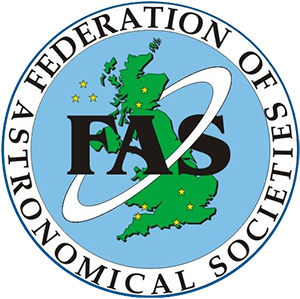Held on Saturday 9th October, at the Institute of Astronomy in Cambridge, the Annual FAS Convention proved to be a great success. The visitors were presented with an interesting and varied range of talks as well as trade stands at which to part with cash in exchange for the latest item of equipment.
After FAS President had welcomed the delegates, Jerry Stone got the proceedings underway with his talk entitled ’Visiting the Lord of the Rings’. Jerry covered the history of discoveries related to the planet Saturn and then went through a blow-by-blow account of the mission of Cassini-Huygens. Whilst most of the delegates were probably generally aware of this mission, this talk tied the whole matter together very well and most listeners learned something new on the subject.
Professor Phillipa Browning (University of Manchester) was next on after the coffee break with her talk on ‘Our Active Sun’. After giving a brief but technical description of our local star, Phillipa explained the results being obtained by the later means of examining the Sun such as Solar Dynamic Observatory (SDO) and recent data from SoHO. The solar cycle was outlined and the current cycle—23, was discussed. In fact Cycle 23 has lasted over 12 years and is the longest for over a century.
The first on after the lunch break was Dr. Steve Owens who gave an interesting review of IYA 2009. The breadth of activities organised by many, many societies showed how active amateur astronomy is in the UK.
It was opportune (!!) that Steve was here to give this review because it had been decided that his efforts on IYA 2009 deserved him being the receiver of this year’s Eric Zucker award. The presentation was made by the 2009 winner, Jerry Workman.
Steve had also been awarded the Joy Griffiths Award by the BAA Campaign for Dark Skies and so Bob Mizon used the FAS Convention as the place to present this award. It was Steve’s efforts towards the achievement of the UK’s first dark sky reserve at Galloway Forest Park.

The FAS AGM was then held, business being transacted without controversy.
Professor Tim Naylor (Exeter University) then presented his talk ‘Star Formation’. He discussed his work on star formation, which he said could be termed ‘stellar archaeology’. The structure of galaxies and their distribution was outlined. The latest theories on star formation from collapsing areas of gas were discussed and several spectacular simulations of galaxy formation and collision were shown. Tim also discussed star types and gave the best explanation of the Herzsprung-Russell diagram many have seen.
After the tea break and the raffle draw, the final speaker of the event was Dr Peter Wheatley (University of Warwick) who gave a talk entitled ‘Hunting for Extra-Solar Planets using Small Telescopes’. For some this title may have been a little misleading in that they had hope of going home and find extra-solar planets with their 150mm Newtonian! Peter outlined the work he was doing as a founder member of the Wide Angle Search for Planets project (WASP). The problems of finding these bodies were explained as were the methods currently being developed to overcome these difficulties.
Once again a great programme had been put together—Steve Williams must take the full credit. However, a word must be said for the real star of the convention!! – Brian Lister of Cambridge AS. For those of you who do not know Brian, he was the one who worked tirelessly at providing the tea and coffee—and with a smile!! The biscuits probably kept a number going through the day, bearing in mind the lack of catering at the event.

Pictures and text by Frank Johns.
